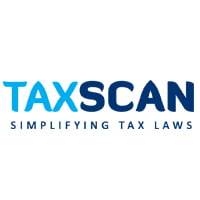Chennai GST Dept. issues supplementary Instructions regarding Blocking of Credits under Rule 86A [Read Circular]
![Chennai GST Dept. issues supplementary Instructions regarding Blocking of Credits under Rule 86A [Read Circular] Chennai GST Dept. issues supplementary Instructions regarding Blocking of Credits under Rule 86A [Read Circular]](https://www.taxscan.in/wp-content/uploads/2020/09/credits-under-Rule-86A-GST-Taxscan.jpg)
The Chennai GST Tax Department issued supplementary instructions regarding the blocking of credits under Rule 86A under GST.
The Joint Commissioners of Territorial Divisions sought clarification on the inputs of the Authorised Officer under Rule 86A while undertaking blocking of credit under the said rule.
Broadly, the issues faced by them are classified as nil or zero balance in all heads of tax in credit ledger; insufficient balance in the relevant heads of credit ledger to cover the entire amount to be blocked; nil or insufficient balance in the head to be blocked but sufficient balance in other head; when certain invoices are not reflected in GSTR-2A, but available in E-way bill system, etc., whether ITC has to be blocked for these cases, as it would appear that the dealer may not have taken the credit; whether Section 73 or 74 action is to be initiated in case of Nil balance insufficient balance in credit ledger.
Rule 86A is somehow a similar course of action like blocking of credit has been given a legal basis. Further Rule 86A empowers the revenue to impose additional conditions/restrictions on use of the amount of input tax credit available in the electronic credit ledger.
The blocking of credit is related to an amount equivalent to such fraudulent or ineligible credit and not such credit itself.
In respect of zero the commercial tax department clarified that balance In all heads of tax in credit ledger because of which no blocking could be done. if the taxpayer is functional, the blocking of amounts equivalent to such credit can be resorted to as and when credit accumulates in his electronic credit ledger and this can be done only if the TP is monitored continuously. If the taxpayer is not functional and with no credit balance, it is impossible to block future accumulated credits too.
The commercial tax department said that in the case of insufficient balance in the relevant heads of credit ledger to cover the entire amount to be blocked, the first step would be to block the amount available as on the date of blocking and the balance amount has to be blocked as and when the credits start to accumulate in the credit ledger of the taxpayer.
In the case where there is nil balance or insufficient balance in the heads of tax to be blocked but credits are available in other heads, on the same analogy as above, blocking of. amount equivalent to such credit Lying in one tax head in lieu of another may be resorted to.
However, it is to be noted that blocking in heads in the credit ledger other than the heads for which such blocking is to be done, is subject to limitations imposed by the cross-utilisation of ITC. In other words, for a request to block GST credit, the available credit in SGST head cannot be blocked and vice versa.
Further, when SGST and CGST credits are to be blocked and amounts are not available in those heads in the electronic credit ledger of the taxpayer, if credit is available only in IGST head, then the IGST credit could be blocked equal to such CGST and SGST amounts to be blocked, Similarly, when IGST credit is to be blocked but no amount is available and credits are available only in CGST/SGST and, then blocking to such extent can be done in the CGST /SGST head.
“As per Para of the circular no 3/2020 read with the provisions of Rule 86A, it can be seen that the officer authorized to block credit is sufficiently empowered to form his belief based on reasons as to whether the credits get covered under the categories mentioned under the rule provisions or not. Therefore, if in the opinion of the authorized officer, any credit is not malafide, etc., he is free to decide not to block the credit; however, it is his sole responsibility to do so based on the material evidences to believe the contra and not on any surmise that absence of invoice details in GSTR-2A could mean that the dealer has not availed credit, etc,” the commercial tax department clarified.
With regard to taking any other action, viz., under Section 74, etc., it is clarified that blocking of credit under Rule 86A is an emergency measure to prevent the taxpayer from using fraudulent or wrong credits taken under the circumstances enlisted under the provision. However, this does not preclude or impede any other action that may be taken under other provisions of GST laws including provisional attachment of property, demand and recovery, etc. It is once again emphasised that any issues arising during the task of blocking do not have any connection with any other action under the GST Law, it added.


